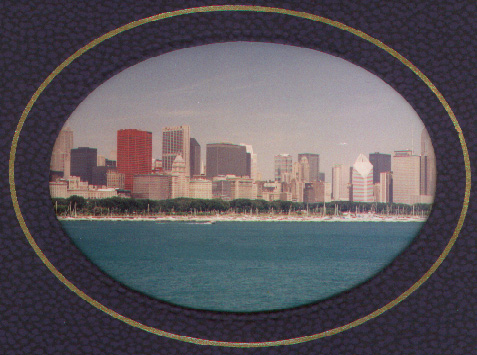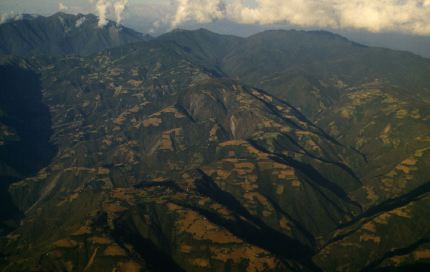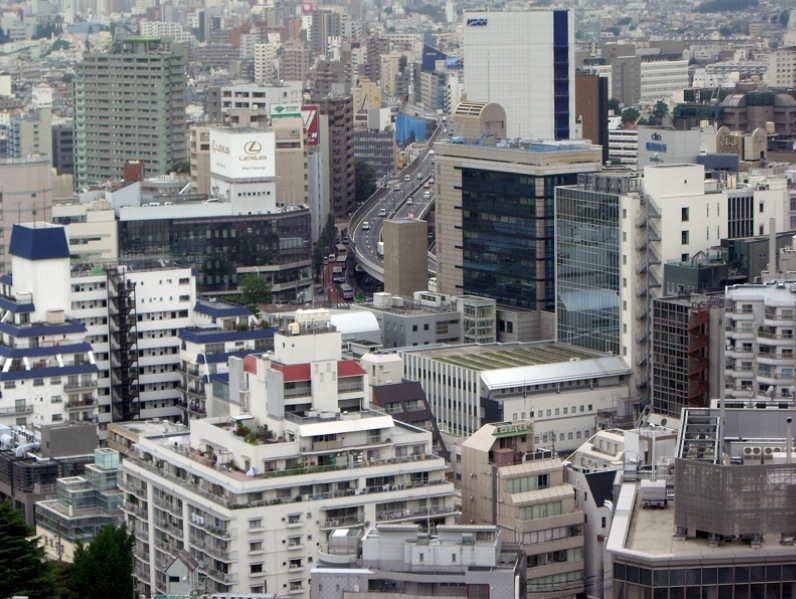 Demographic debates
have moved from a focus on quantity and rate of growth to a more subtle discussion
of density, or the number of people per area.
Demographic debates
have moved from a focus on quantity and rate of growth to a more subtle discussion
of density, or the number of people per area. Demographic debates
have moved from a focus on quantity and rate of growth to a more subtle discussion
of density, or the number of people per area.
Demographic debates
have moved from a focus on quantity and rate of growth to a more subtle discussion
of density, or the number of people per area.
Density, is equal to the number of people per area.
or
D = P / A
Population density, then is D for density = equals to a number P for people per A for area.
Population density rises to a threshold -- allowing the intensification of farming practices promoting an economic return on the increased production commensurate with the expenditure of time and capital to implement the intensive farming practices.
Some anthropologists argue that farming requires a sufficient population to maintain fields, harvest crops and preserve food from spoiling. Without enough people even subsistence farming falters to maintain sufficient nourishment. But if there exists a lower density threshold, below which the adoption of intensive agriculture bears too high an opportunity cost, then is there also an upper density threshold beyond which the crowding and congestion are unable to sustain a population?
Thresholds of population density that influence environmental conditions:
| Symbol | meaning | density |
| LDT | lower density threshold | 256 persons / square kilometer * |
| UDT | upper density threshold | unknown variable |
| MDT | maximum density threshold | 1 person / 500 square feet |
| FST | fire safety threshold | 1 person / 7 square feet |
The maximum density figure used here is based on fire evacuation and room occupancy data used by fire Marshals in regulating the number of people who assemble in buildings. Clearly ten square feet per person would be an easier number to suggest crowded conditions, beyond which fire and health safety become critical issues of public concern.
At ten square feet per person there would be no space for movement and since people are not trees such a density for humans is a temporary condition at best. People basically require a great deal more space than critics of demographic determinists have suggested.
Space is important to correctly conceive of in terms of the quantity of feet. Quantity is dependent on area (length times width) or volume (length times width times height or depth). Consider the size of your height as the staring point in relation to ten feet.
| one dimension | two dimensions | three dimensions |
| 10 | 100 | 1000 |
| linear feet | square feet | cubic feet |
There are 5,280 feet in a linear mile, if you line people or trees up at ten foot intervals along a mile-long transect there would be 528 people or trees in a row. As you have already discovered even ten feet linear and 100 square feet (in area) is not sufficient room for people to remain in for any length of time. So consider that many people in the world live in 500 square feet of room; if they are lucky that is one person in 500 square feet. Clearly they live in association with others, with animals and with common places whose area is used by others. So we can consider this as personal space, adjacent space for draft animals and common space used by the community.
| personal needs | animal needs | common areas | resource areas |
| 500 square feet | 1000 square feet | 1000 square feet | 2500 square feet |
| what we occupy | for livestock & pets | for hygiene & water | Sum of immediate needs |
| cubic feet of air & water | grazing & breeding ranges | markets, pathways, etc. |
? |
Considering the individual space and social areas that are necessary for humans to thrive, the figures below representing unrealistically dense populations are used for you to consider the implications of crowding in terms of temporary occupancy levels often used by fire marshals to determine the size of rooms and number of exits per person required in those rooms for their occupants to safely enter or leave the confined space.
3,982,628 people per square mile at seven square feet per person
2,787,840 people per square mile at ten square feet per person
The above densities would not allow for the recognized requisite infrastructure to service these populations with water, waste removal, transportation and air. Food, fuel, recreation and other necessary assets of life would take up even more space. This is what is meant by the question mark under the above column labeled resource areas. Before discussing the varied sizes of resource areas used to sustain human populations, lets keep pursuing the idea of maximum occupancy to really understand what a doubling of population actually entails in terms of space; both personal and social space are needed for any population to thrive, acquire sustenance, reproduce and raise their young.
1. 3 million people per square mile still appears high, although 20 square feet of surface area per person would double the amount of land available for standing room only from the fire safety requirements.
Several factors make such a figure absurd since not all areas are equal with respect to the quality of the standing room. For example, arable land needed to grow crops is ill suited for housing people, whereas steeply sloped ground prohibits development as easily as flat land. But the environment is not the principle determinant of adequate living space, culture and behavior -- to a far more important degree -- dictate what is considered an adequate amount of secure space within which populations may thrive.
 Himalayan "foothills" of scattered farm settlements
and their concurrent impact on the surrounding vegetation. Each acquires from
the land according to his needs a complete benefit while sharing the costs of
deforestation and erosion with all in the same watershed.
Himalayan "foothills" of scattered farm settlements
and their concurrent impact on the surrounding vegetation. Each acquires from
the land according to his needs a complete benefit while sharing the costs of
deforestation and erosion with all in the same watershed.
Cultural and social differences dictate what is considered a minimum amount of space for people to live comfortably; 1000 square feet per person for Europeans is considered more than adequate whereas US homes are usually 1600 - 2000 square feet per person.
So there is a point at which square feet, acreage and even hectares or square miles are not sufficient to reveal the area populations need to exist, let alone prosper. There are really cultural spatial requirements for adequate living space and these differ with respect to economic conditions, technological support services, technical mechanisms to provide water and air, such as electrical utilities, and the area needed to grow or acquire one's food and nourishment.
At these cultural spatial requirements densities drop considerably from health and fire safety guidelines.
![]()
| Population | space in area square |
density description |
people / acre |
|
1.3 million |
20 square feet / person |
(with infrastructure space) |
20000 |
|
27,878 |
1000 square feet / person |
Eurasian urban areas |
45 |
|
13,939 |
2000 square feet / person |
affluent & US suburban |
30 |
|
9,293 |
3000 square feet / person |
very affluent areas |
15 |
What ultimately is a comfortable density with respect to real estate markets introduces and economic dimension to the idea that social choices about adequate space are dictated by cultural and behavioral standards.

| Ghost Acres | Population Ecology |
|
Ecological Model | Urban sprawl |
*Source:
Boserup, 1981, p.9, Table 3.2, p.19 and Table 3.7, p. 23 : Boserup, E. . Population and Technological Change. Chicago: University of Chicago Press, 1981.
Fire Department data and statistics. Winter Park, Florida 32789
There are 27,878,400 square feet in one square mile of surface area. This can be considered a minimal amount or quantity of space in a field of view or say a landscape.
Population | Population Dynamics | Population Impact | Attributes of population